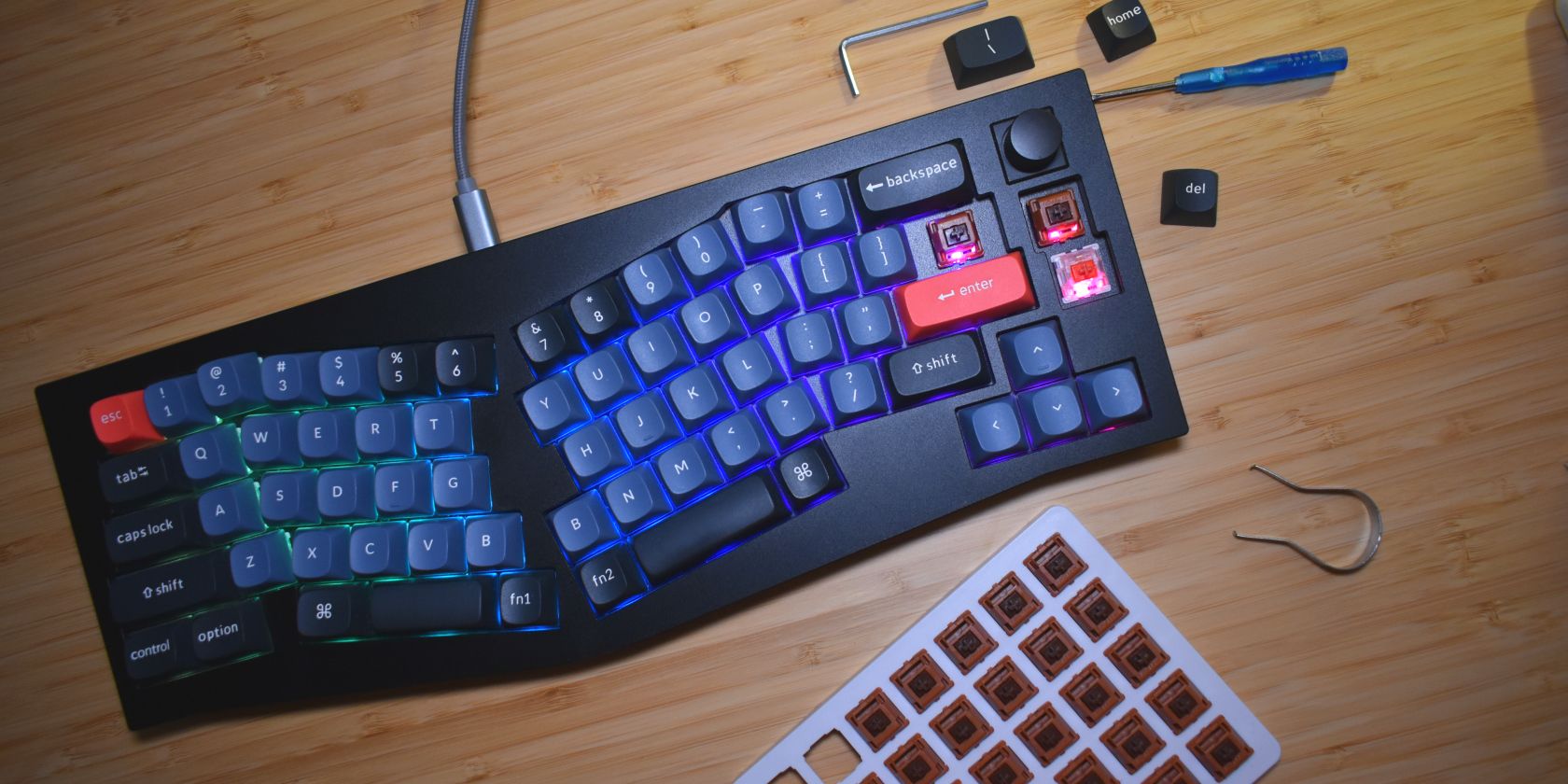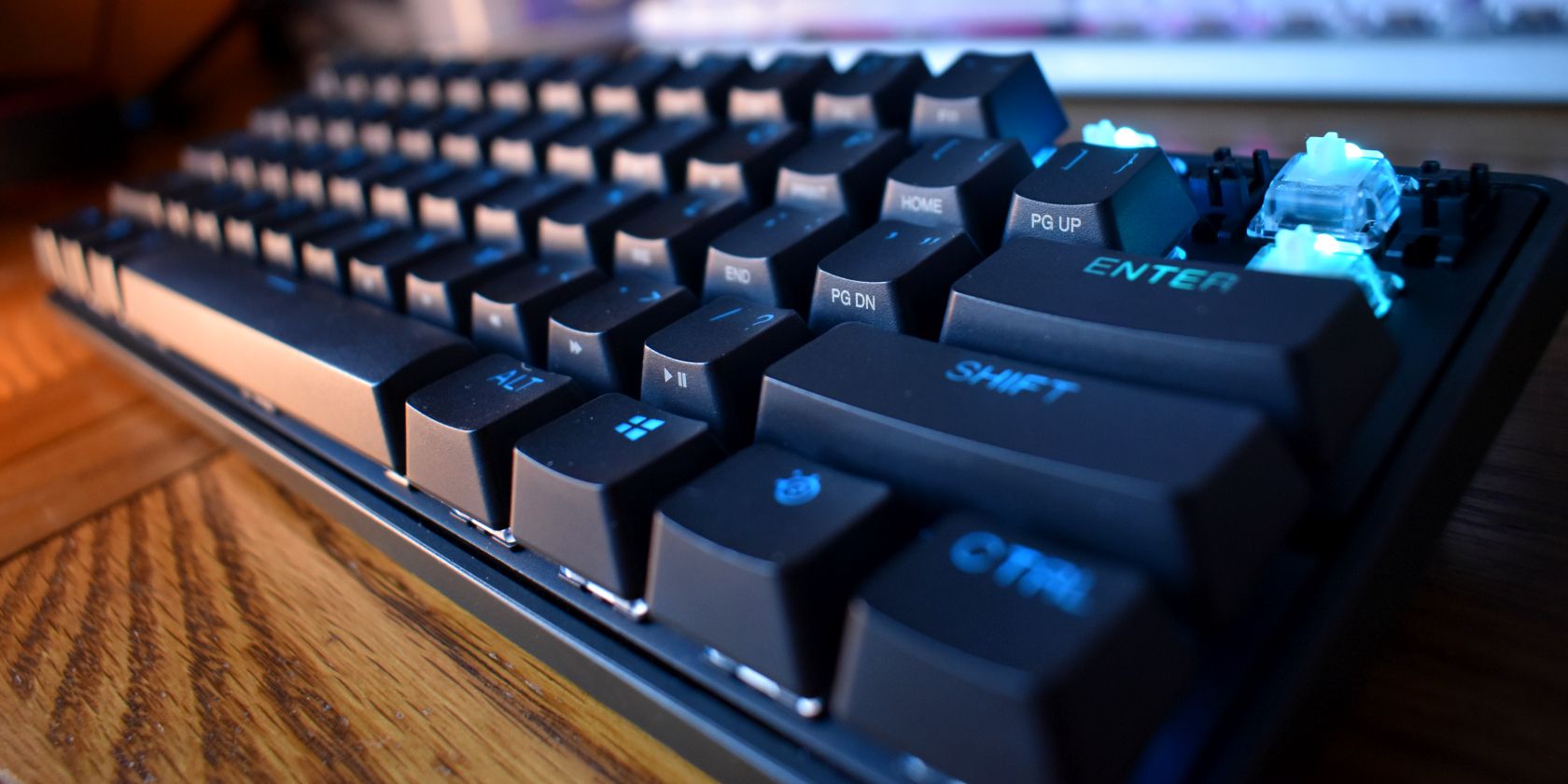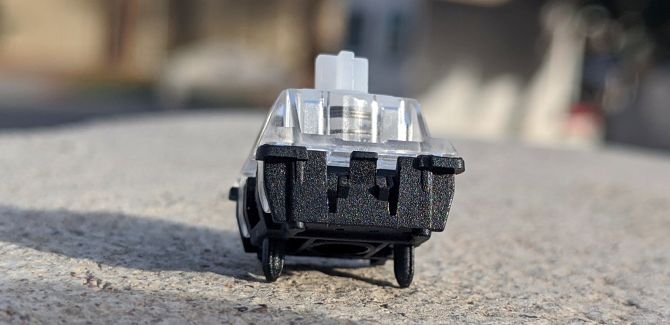Most people don't think much about the keyboard of their computer. But as something you use daily, it can really make a difference to how your computer feels when you interact with it.
Many serious tech geeks love mechanical keyboards. Mechanical keyboards are more expensive than regular keyboards, but gamers and writers often swear by them. So you might wonder, what is a mechanical keyboard, and how does it work?
How Does a Traditional Keyboard Work?
Mechanical keyboards are different from traditional keyboards. When we say traditional, we mean a keyboard with a membrane featuring rubber domes. When you press a key, a rubber switch pushes through a hole in the membrane and completes a circuit, sending an input signal to your computer.
The advantage of this type of keyboard is that they are cheap to manufacture and are somewhat resistant to liquid spills. They are also easier to make compact and low profile, like the keyboard you find on a laptop.
However, people who type a lot or who game often find rubber dome keyboards feel "mushy." They lack a distinct clicking sensation when you push a key. Instead, it can feel like you are pushing down through soft material. The lack of resistance and soft feeling of the keys means it takes more effort to type, and the results are less accurate.
How Does a Mechanical Keyboard Work?
The mushiness is why many users prefer mechanical keyboards. Mechanical keyboards don't use a rubber dome membrane construction. Instead, they have individual mechanical switches under each key, which has a spring in. When you press a key, the spring is pushed down to connect the circuit and register a keystroke.
These keyboards are called "mechanical" because they have a physical mechanism (the spring) that connects the circuit. A mechanical keyboard might look the same as a rubber dome keyboard, as it can have the same key caps. But the feel of pressing down on a spring is different from pressing down on a rubber dome.
Many people find mechanical keyboards more pleasing to interact with, as well as finding it makes their typing more accurate.
How Mechanical Keyboard Switches Work
Mechanical keyboards don't only come in one style, however. The switches that they use can differ. Different switches have different feelings when you type on them. For example, some keyboard switches are light and easy to press, which is good for gamers who need to hit buttons very quickly and want an extremely responsive keyboard.
However, light and easily pressed switches may lead to more mistakes when typing, as you can accidentally press a key without meaning to. Therefore, people who type a lot often prefer a heavier switch that requires a more deliberate push to register a keystroke.
How difficult a switch is to press is measured by its actuation force. The actuation force of a keyboard switch is measured in grams and reflects how hard you need to push to activate a keystroke. The higher the actuation force in grams, the harder you must push to register a keystroke.
Another quality that differs between switches is whether they have a tactile bump. Switches with this tactile bump give audible clicky feedback when you press them. Some people like this as it helps them to be more accurate with their typing. Other people find it distracting. It's up to you which version you prefer.
Your choice of switch boils down to linear, tactile, and clicky switches.
-
Linear switches are smooth, offer little resistance, and have a low actuation force. Linear switch examples include:
- Cherry MX Red (45g actuation force)
- Gateron Yellow (50g actuation force)
- Kailh Speed Silver (40g actuation force)
-
Tactile switches offer more resistance and a physical, tactile bump while typing but aren't as noisy as clicky switches. Tactile switch examples include:
- Cherry MX Brown (45g actuation force)
- Gateron Brown (45g actuation force)
- Kailh Box Brown (50g actuation force)
-
Clicky switches provide a tactile bump and an audible "click" when the key is actuated. Clicky switch examples include:
- Cherry MX Blue (50g actuation force)
- Gateron Blue (55g actuation force)
- Kailh Box White (50g actuation force)
Mechanical Keyboard Switch Types Explained
The best-known manufacturer of mechanical switches is Cherry. This company is well-known for its high-quality switches. On most high-end mechanical keyboards, you'll find they are advertised as coming with Cherry MX switches or Cherry MX compatible switches.
Within the category of Cherry MX switches, there are several different styles. These switches have different characteristics and are known by color names, such as red, blue, and brown. Some of the Cherry MX switches you'll come across are:
- Cherry MX Red is a light-feeling switch with a 45g actuation force. These responsive switches are ideal for gamers, but writers may find they lack the satisfying click of heavier switches.
- Cherry MX Blue is a heavier switch with 60g actuation force and a tactile "bump." The clickiness of these switches makes them popular with frequent typists, though gamers will find them rather tiring to play on. These are also the noisiest switches, which may be something to consider if you work or game around family or housemates.
- Cherry MX Black is similar to the MX Blue but lacks the bump, so it has less tactile feedback.
- Cherry MX Brown is a middle-ground switch with 45g actuation force which makes it suitable for both typing and gaming.
Cherry MX Keyboard Switch Alternatives
It used to be the case that if you wanted a high-quality mechanical keyboard, you had to go with Cherry switches. But that's not the case anymore. Several other companies make mechanical keyboard switches, which can be of comparable quality and can be used in more affordable mechanical keyboards.
Some of the best Cherry MX switch alternatives include Kailh, Gateron, Zealios, Razer Mechas, Outemu, Halo, NovelKeys, Logitech Romer-G, and Alps. Some of these are Cherry clones, meaning they are other brands' interpretations of the Cherry versions. Others are original switch designs that have slightly different feels and characteristics. But the reality is that there are now countless mechanical keyboard switch manufacturers, and finding the switch that suits you might mean testing a few different options out.
Try out a friend's keyboard, or go to a computer store and try their sample keyboards. If this isn't possible for you, then Cherry MX Brown switches will likely be most pleasing for most people and use cases.
Should You Buy a Mechanical Keyboard?
Mechanical keyboards are typically more expensive than regular keyboards. And you need to try out a variety of switches to find the one that suits you. But if you type or game a lot, the greater accuracy and ease of use can make a mechanical keyboard a worthwhile investment.
However, the price of a good mechanical keyboard has dropped, and you no longer have to shell out hundreds of dollars to buy a high-quality mechanical keyboard. For example, many of Keychron's mechanical keyboards offer excellent performance and are typically priced between $100 and $200, and will absolutely improve your typing experience.




